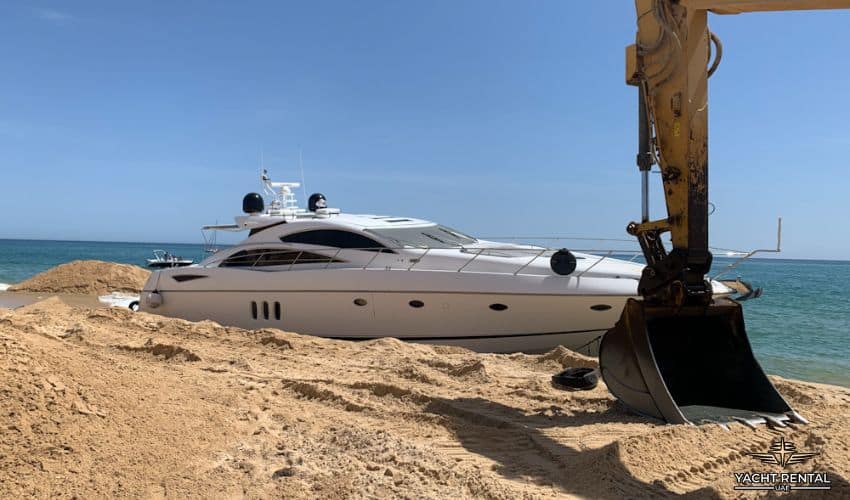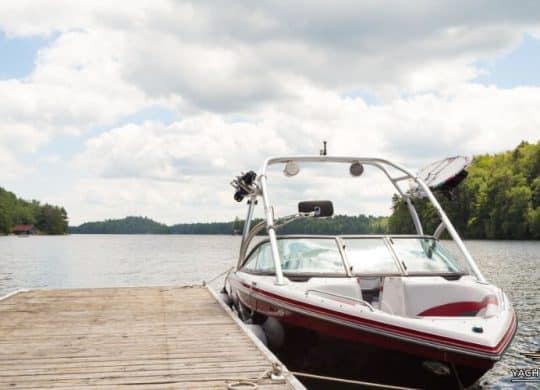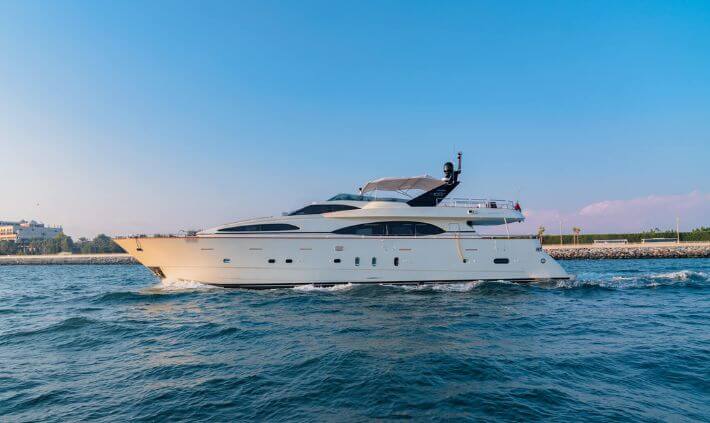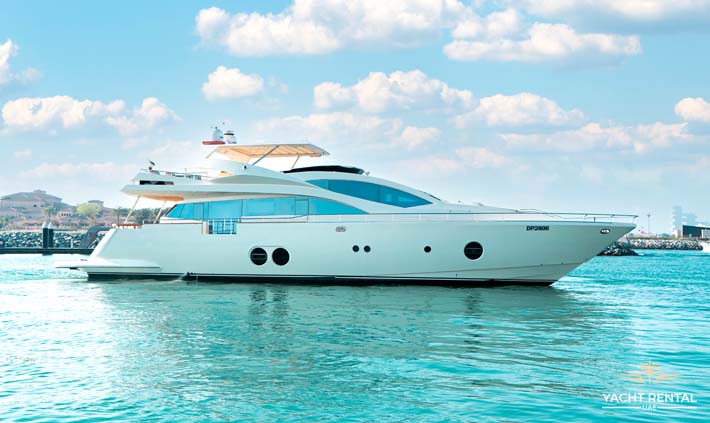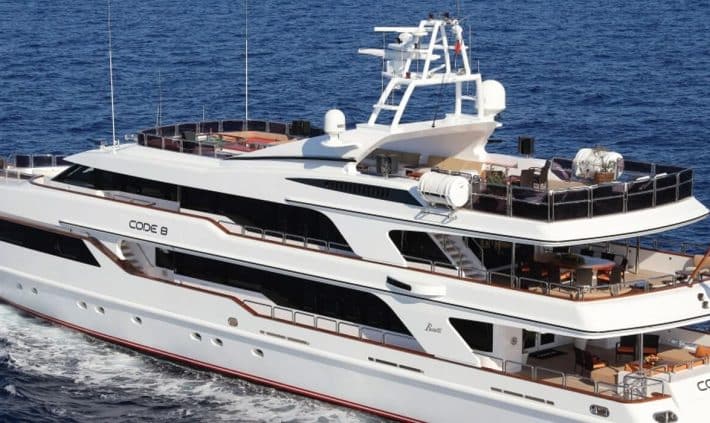Stop and Secure the Crew and Yourself
The moment of impact in jarring. Your instincts may scream at you to act immediately, but the correct first move is a deliberate pause.
- Check for Injuries: The sudden stop can cause whiplash, falls, or impact injuries. Check on every person aboard before touching any controls. A medical emergency is your top priority. If anyone is injured, issue a “Pan-Pan” call on your VHF radio.
- Turn Off Engine(s): Shut down all engines right away. A running engine can suck sand, mud, or debris into the cooling system, leading to rapid overheating and severe mechanical failure. It also reduces the risk of fire from a potential fuel leak.
- Put on Life Jackets: Everyone on board must put on a personal flotation device (PFD). The situation’s stability is unknown. The boat could shift, take on water, or capsize without warning.
Assess Hull Integrity: Is the Boat Taking on Water?
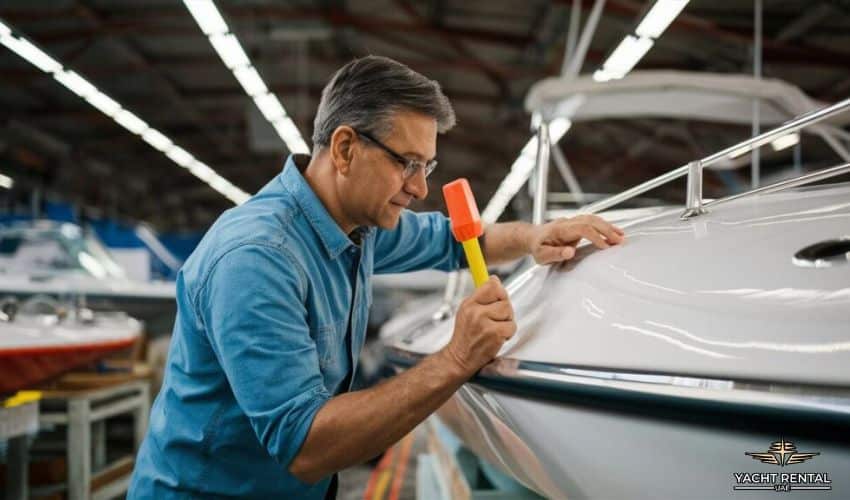
Before you even think about getting free, you must determine if the hull is breached. The ground itself might be the only thing plugging a hole. Moving the boat could cause it to sink rapidly.
- Open all bilge and engine room hatches.
- Listen for the sound of rushing water.
- Use a flashlight to look for water spraying from cracks or seams.
- Check the automatic bilge pump. Is it running constantly? If so, you have a leak.
- Physically inspect the area around thru-hull fittings, transducers, and the keel-hull joint. These are common failure points.
If you find water entering the boat, your focus must shift from getting unstuck to damage control. Keep your bilge pumps running. If the flow is heavy, prepare emergency plugs and call for assistance immediately. A “Mayday” call is appropriate if you are in grave and imminent danger.
Analyze the Grounding Situation
The type of bottom you hit dramatically changes your options. You also need to know the tide’s direction. A rising tide may lift you free, while a falling tide will leave you more firmly stranded.
Tidal Information: Use a chart plotter, a tide chart app on your phone, or look at nearby pilings or seawalls to see if the water level is rising or falling.
Grounding Type Assessment
| Grounding Type | Primary Risk | Correct Action |
| Soft Mud or Sand | Sucking debris into engine intakes; strain on running gear. | Wait for a rising tide. Avoid using the engine. |
| Hard Sand or Gravel | Abrasion to the hull; damage to keel, rudder, and propellers. | Wait for a rising tide. Do not attempt to power off. |
| Rock or Reef | Puncture of the hull; catastrophic structural failure. | DO NOT MOVE. Call for professional assistance immediately. |
| Coral | Environmental damage (heavy fines); severe hull damage. | DO NOT MOVE. This is an emergency requiring a professional tow. |
As reported by the U.S. Coast Guard, grounding is consistently one of the top five causes of boating accidents. Many of these escalate due to poor decisions made in the first few minutes.
Call for Professional Help
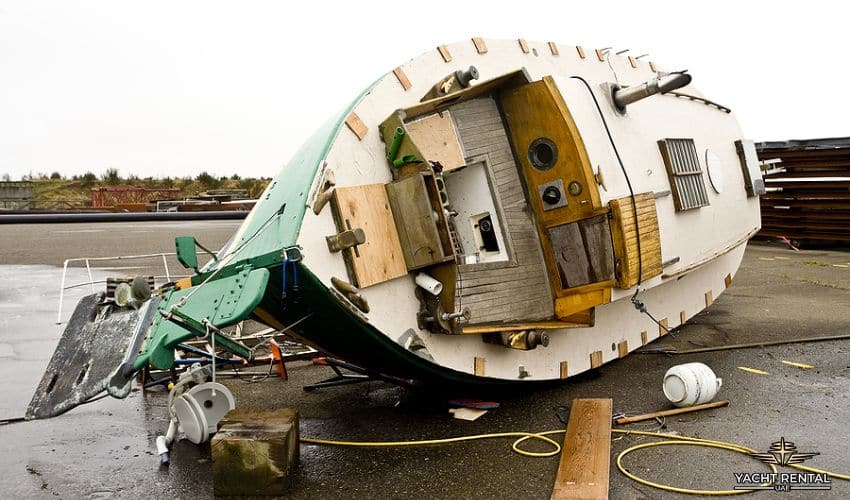
Pride has no place in a grounding situation. A premature attempt to free your boat can cause thousands of dollars in damage that a professional tow could have avoided. Make the call for assistance if:
- Anyone is injured.
- You are taking on water.
- You are on rocks, a reef, or coral.
- You are unsure of your boat’s condition.
- A falling tide is planting you harder aground.
Use VHF Channel 16. State your location (GPS coordinates are best), the name of your vessel, the nature of your distress (grounding, taking on water), and the number of people on board. A cell phone is a backup, but VHF is superior as other nearby vessels can hear your call and may be able to render aid.
If Safe, Prepare to Get Free (With Caution)
Only attempt to free the boat yourself if you meet ALL of these conditions:
- The hull is 100% intact (no leaks).
- You are on soft sand or mud.
- The tide is rising.
- The waves are calm.
Do not use your engines. Instead, try to shift weight. Move coolers, anchors, and people to the side of the boat that is deepest in the water. This may slightly lift the grounded section. You can also try to use a long pole or boat hook to push off the bottom. If the boat begins to move, continue pushing it toward deeper water.
Once free, proceed at a very slow speed and continue to monitor your bilge for any signs of a new leak. A hard grounding can cause stress fractures that only open up once the boat is back in the water and subject to movement.
Also Read: What Should You Do If You Encounter a Fishing Boat While Out in Your Vessel
Final Words
The silence after a high-speed grounding is often the most unsettling part. One moment you are moving, the next you are in a dead stop. Your response in the next sixty seconds matters more than anything. The most valuable piece of equipment you have is not your engine or your anchor; it is your calm and methodical thinking. A boat can be repaired or replaced. A poor decision made in a moment of panic can have consequences that last a lifetime. Check your crew, check your hull, and call for help sooner rather than later.
Frequently Asked Questions (FAQs)
What is the single biggest mistake boaters make after running aground?
The most dangerous mistake is immediately putting the engine in reverse and applying power. This can dig the stern in deeper, suck debris into your engine, damage your propeller and rudder, and potentially tear a hole in a hull that was previously only resting on the bottom.
Should I try to reverse off a sandbar?
No, not after a high-speed grounding. The force can wedge the keel or running gear deep into the sand. Reversing may cause more damage. The safer option is to wait for the rising tide to lift you, or to get a tow from a professional service like Sea Tow or TowBoatUS.
What should I do if my boat is taking on water after running aground?
Your priority is to control the leak and call for help. Keep bilge pumps on, find the source of the leak if possible, and use emergency plugs or even rags to slow the ingress. Issue a “Mayday” call on VHF Channel 16 if the situation is life-threatening.
How do I know if the tide is rising or falling?
Check a navigation app or chartplotter. If you don’t have electronics, look at a stationary object like a channel marker piling or a seawall. If the water line on the object is going up, the tide is rising. If more of the object is becoming exposed, the tide is falling.
Will my boat insurance cover damage from a grounding?
Most boat insurance policies cover grounding accidents. However, your policy may have specific requirements or exclusions. It is vital to report the incident to your insurance company immediately and document everything with photos. Following correct safety procedures helps ensure your claim is processed smoothly.

